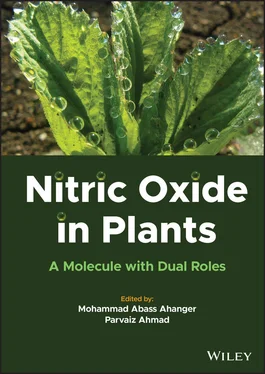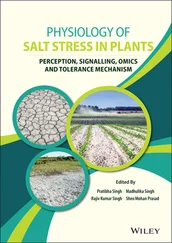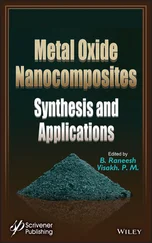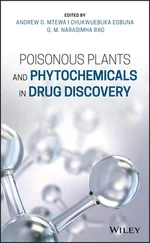Nitric Oxide in Plants
Здесь есть возможность читать онлайн «Nitric Oxide in Plants» — ознакомительный отрывок электронной книги совершенно бесплатно, а после прочтения отрывка купить полную версию. В некоторых случаях можно слушать аудио, скачать через торрент в формате fb2 и присутствует краткое содержание. Жанр: unrecognised, на английском языке. Описание произведения, (предисловие) а так же отзывы посетителей доступны на портале библиотеки ЛибКат.
- Название:Nitric Oxide in Plants
- Автор:
- Жанр:
- Год:неизвестен
- ISBN:нет данных
- Рейтинг книги:5 / 5. Голосов: 1
-
Избранное:Добавить в избранное
- Отзывы:
-
Ваша оценка:
- 100
- 1
- 2
- 3
- 4
- 5
Nitric Oxide in Plants: краткое содержание, описание и аннотация
Предлагаем к чтению аннотацию, описание, краткое содержание или предисловие (зависит от того, что написал сам автор книги «Nitric Oxide in Plants»). Если вы не нашли необходимую информацию о книге — напишите в комментариях, мы постараемся отыскать её.
Examines the beneficial roles of nitric oxide in growth and stress tolerance regulation through its involvement in tolerance mechanisms Nitric Oxide in Plants: A Molecule with Dual Roles
Nitric Oxide in Plants: A Molecule with Dual Roles
Nitric Oxide in Plants — читать онлайн ознакомительный отрывок
Ниже представлен текст книги, разбитый по страницам. Система сохранения места последней прочитанной страницы, позволяет с удобством читать онлайн бесплатно книгу «Nitric Oxide in Plants», без необходимости каждый раз заново искать на чём Вы остановились. Поставьте закладку, и сможете в любой момент перейти на страницу, на которой закончили чтение.
Интервал:
Закладка:
1.1.1 Historical Evidence and Biosynthesis of Nitric Oxide
Several studies have been conducted over the past several decades to investigate the presence and characteristics of NO gas in living beings. Gas, as a versatile molecule, has piqued curiosity and opened up new opportunities for research. NO gas is an atom gas with well-defined communication roles in mammalian systems, serving as a second messenger during vasorelaxation, neurotransmission, immunity, and toxicity. It is now clear that NO performs a critical role in animal physiology. Because of its extensive biological relevance, NO was designated “Molecule of the Year” in 1992 by Science , and Furchgott, Murad, and Ignarro were given the Nobel Prize in Physiology and Medicine in 1998. Furchgott discovered in 1980 that an unknown molecule found in animal tissue could relax smooth muscle cells, and he dubbed it EDRF (endothelium-derived reposeful factor). Murad discovered years ago that vasodilators activate guanylate cyclase (GC), which creates cyclic guanosine monophosphate and relaxes muscle fibers. This discovery begged the question of how a vasodilator outside the cell could influence a catalyst inside the cell. The solution was that the vasodilator was tainted with NO residues. Murad then bubbled NO gas across swish muscle cells, activating gigacycles per second. Thus, even before eukaryotes were thought to produce NO, he postulated that hormones may regulate swish muscles via NO. Years later, Ignarro demonstrated that NO has comparable chemical behavior to EDRF and is, in fact, a twin of EDRF. NO release from plants was initially suspected by Klepper in soybeans in 1975, much earlier than in mammals (Klepper 1979). The vast biological importance of gas in plants was established in the 1990s (Gouvea et al. 1997; Leshem et al. 1998).
In animals, NO has since been recognized as an important signaling molecule in maintaining blood pressure within the circulatory system, stimulating host defenses within the system, controlling neural transmission within the brain, controlling organic phenomena, protoplasm aggregation, learning and memory, male sexual function, toxicity and cytoprotection, the development of artery hardening, and a variety of other functions. It functions as a secondary transmitter in mammalian systems during vasorelaxation, neurotransmission, immunity, and toxicity. As a result, they play critical roles in animal physiology.
However, unlike animal physiology, the physiology and chemical chemistry of NO in plants is less well known. NO has the potential to be a dynamic bioactive molecule that plays an important physiological role in plants and animals.
1.1.2 NO Biosynthesis in Plants
The process of NO production has been explored in a variety of organisms, including microorganisms, alga, lichens, gymnosperms, and angiosperms (Rőszer et al. 2014). NO synthesis utilizes both accelerator and nonaccelerator mechanisms. Body parts, plastids, mitochondria, and peroxisomes are important sites for NO production (Rőszer 2012a, 2012b). Furthermore, multiple organelles, including protoplasm, cell wall, endoplasmic reticulum, and apoplast, generate NO in higher plants (Fröhlich and Durner 2011). Chakraborty and Acharya (2017) distinguish between subtractive and aerobic NO production mechanisms. The protoplasm, mitochondria, plastid, peroxisomes, and apoplast are the primary sites of subtractive NO Xproduction, which is mediated by the nitrate enzyme or mitochondrial negatron transport chain and deoxygenated proteins containing heme. The aerobic route of NO production begins with l-arginine, which appears to include the enzyme NO synthase. Despite the fact that numerous genes and proteins coding for NOS enzymes are known in the class system, prokaryotes, and eukaryotes, the kingdom Plantae is still little characterized (Figure 1.1).

Figure 1.1 Diagram representing NO synthesis. NO3−, nitrate; NiR, plastidial nitrate reductase; XOR, xanthine oxido-reductase; NiR-NOR, nitrite reductase; NR, nitrate reductase; PA, polyamines.
1.2 The Function of Nitric Oxide in Plants
Nitric oxide is a common chemical molecule that is important in plant physiological activities. NO sources are useful in breaking dormancy and boosting seed germination in a variety of crops (Bethke et al. 2007; Giba et al. 2007; Prado et al. 2008; Albertos et al. 2015; Sanz et al. 2015). Similar research has been done to show the impact of organic nitrates in enhancing light-dependent and phytochrome-regulated germination in Pauwlonia tomentosa and Stellaria medium (Grubisic et al. 1992; Jovanovic et al. 2005). NO is involved in the regulation of catalase, ascorbate peroxidase, and aconitase activities (Clarke et al. 2000; Navarre et al. 2000), in cell wall lignification (Ferrer and Ros Barcelo 1999), the regulation of ion channels of guard cells(Garcia et al. 2003), mitochondrial and chloroplastic functionality (Yamaski et al. 2001), cell death (Pedroso et al. 2000), senescence (Hung and Kao 2003), accumulation of ferritin (Murgia et al. 2002), wound signaling (Orozco-Cardenas and Ryan 2002), cytokinin-induced programmed cell death (Neill et al. 2003), and abscisic acid (ABA)-induced stomatal closure (Neill et al. 2002). NO mediates maturation and senescence, operates on ethylene antagonism (Lamattina et al. 2003), induces increase of flavonoid production in Camellia sinensis L., and endogenous NO stimulates brassinosteroid (Li et al. 2017). Nitric oxide has a visible part to play in the formation of plant roots and shoots. It promotes root and plant development in many plants (Corpas et al. 2006, 2015). Controlling morphogenesis, growth, and development in plants requires targeted NO control (Hebelstrup et al. 2013). NO is primarily necessary for the establishment of plant–microbe interactions, which regulate N 2-fixing symbiotic relationships and nodule senescence (Hichri et al. 2015). NO influences senescence in several plant species, including Arabidopsis , tobacco, pea, wheat, and others (Procházková et al. 2011), as well as flower formation in olive and Arabidopsis (Seligman et al. 2008; Zafra et al. 2010; Procházková et al. 2011). Nitric oxide is a crucial chemical in agriculture. It promotes seed germination, reduces postharvest losses by delaying fruit ripening, and improves the shelf life and quality of cut and detached flowers. NO also increases the activity of antioxidant enzymes in plants, which influences RNS and ROS metabolism (Corpas and Palma 2018).
1.3 NO’s Role in Biotic Stress
Several studies conducted within the past decade have revealed that NO is engaged in communicating defense responses during plant–pathogen interactions. Pathogen challenges typically result in hypersensitization (HR). There is evidence that NO, in addition to forming reactive oxygen intermediates (ROIs) and salicylic acid (SA), plays a vital communication function throughout life (Delledonne et al. 1998; Durner and Klessig 1999).
Hypersensitized necrobiosis via NO is a prominent example of programmed cell death (PCD). NO-donor treatment of plant structure has been found to trigger chromatin granule condensation and dioxyribonucleic acid fragmentation (Clarke et al. 2000; Pedroso et al. 2000). Furthermore, NO-induced necrobiosis may be silenced by an animal caspase-1 molecule (Clarke et al. 2000). Despite studies demonstrating proteolytic enzyme activity in plants (D’Silva and Poirier 1998; Hatsugai et al. 2004; Rojo et al. 2004), associated transgenic plants with an overexpression of a proteolytic enzyme inhibitor – protein p35 and Op-IAP – show homologous recombination (HR) inhibition (Dickmann et al. 2001; Del Pozo and Lam 2003).
Читать дальшеИнтервал:
Закладка:
Похожие книги на «Nitric Oxide in Plants»
Представляем Вашему вниманию похожие книги на «Nitric Oxide in Plants» списком для выбора. Мы отобрали схожую по названию и смыслу литературу в надежде предоставить читателям больше вариантов отыскать новые, интересные, ещё непрочитанные произведения.
Обсуждение, отзывы о книге «Nitric Oxide in Plants» и просто собственные мнения читателей. Оставьте ваши комментарии, напишите, что Вы думаете о произведении, его смысле или главных героях. Укажите что конкретно понравилось, а что нет, и почему Вы так считаете.












